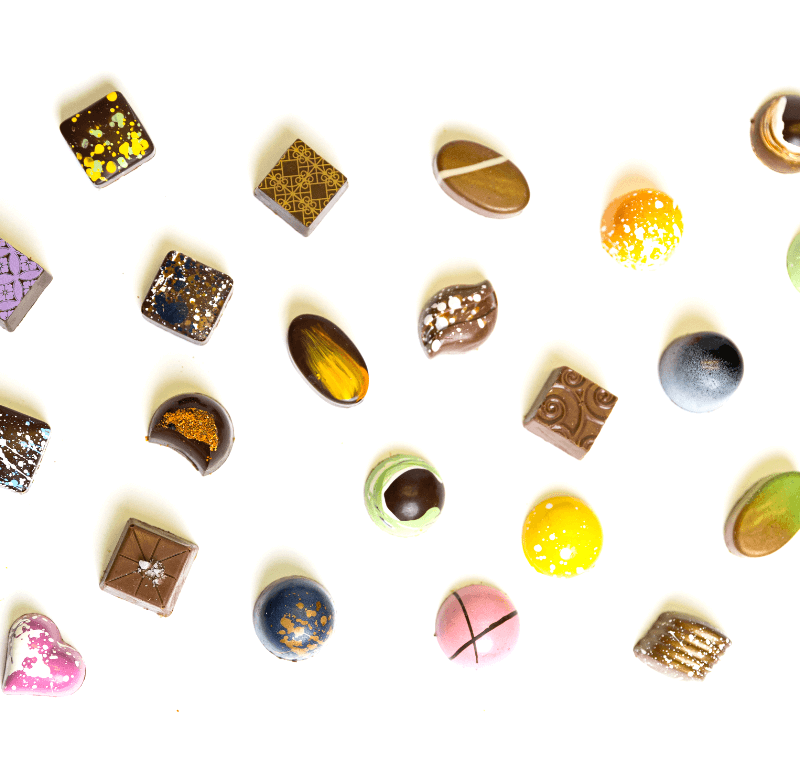The Sweet History of Chocolate and Christmas: A Love Story
The air grows crisp, the lights begin to twinkle, and a sense of magic fills the streets. As the festive season approaches, our minds turn to cherished traditions: decorating the tree, singing carols, and, of course, indulging in delectable chocolate. From the moment we open the first window on an Advent calendar to the last bite of a post-dinner truffle, chocolate is woven into the very fabric of our Christmas celebrations. But have you ever stopped to wonder why? How did this simple, dark bean from a tropical tree become a symbol of warmth, sharing, and holiday cheer? The story of chocolate and Christmas is a fascinating tale of ancient traditions, royal indulgence, and industrial innovation. It’s a love story that spans continents and centuries, and one that continues to be written today.
The Bitter Beginnings: Chocolate's Ancient Roots
Our journey begins not with snow and sleigh bells but with the sun-drenched jungles of Mesoamerica. Long before it was a sweet confection, chocolate was a bitter, spiced drink revered by civilizations like the Mayans and Aztecs. They called it "xocolātl," which translates to "bitter water." This was not the candy we know and love today. It was a potent, frothy beverage, often flavored with chili peppers and vanilla. The cacao bean was so valued that it was even used as a form of currency. It was considered a gift from the gods and was used in rituals, ceremonies, and as a medicinal tonic. The idea of using chocolate for pure indulgence was centuries away.

From the Jungle to the Palace: Chocolate's European Transformation
When Spanish conquistadors brought cacao back to Europe in the 16th century, the bitter brew was initially met with mixed reactions. The European palate, accustomed to sweetness, found it unappealing. However, a brilliant transformation was on the horizon. The Europeans began to experiment, adding sugar, cinnamon, and other spices to the mix. The bitter water became a luxurious, sweet beverage enjoyed by the aristocracy. Chocolate became a status symbol, a drink of the wealthy and powerful. Exclusive "chocolate houses" popped up across Europe, where the elite would gather to sip this exotic new delight. It was during this period that chocolate began its slow, deliberate march toward becoming a confection.
The Industrial Revolution: The Birth of Solid Chocolate
For centuries, chocolate remained a liquid, reserved for sipping. The true turning point came with the Industrial Revolution. New machinery and innovative processes made it possible to produce chocolate on a massive scale. In 1828, a Dutch chemist named Coenraad Johannes van Houten invented a process to press the fat (cocoa butter) from roasted cacao beans, creating cocoa powder. This innovation led to the creation of solid, edible chocolate. It was no longer just a drink; it was a food. Soon, chocolatiers began to experiment, creating the first chocolate bars and bonbons. Chocolate was no longer an exclusive luxury for the aristocracy; it was becoming a treat for the masses.
Queen Victoria and the Golden Age of Gifting
The 19th century was a pivotal time for both Christmas and chocolate. The traditions we associate with the holiday today, like decorated trees and gift-giving, were popularized during the reign of Queen Victoria. It was a time of sentimentality and celebration of family. As the custom of exchanging gifts flourished, a new type of present emerged: the beautifully crafted box of chocolates. Companies began to package their confections in elegant, decorative tins and boxes, making them the perfect, thoughtful gift. The convenience and beauty of these boxed chocolates made them an instant hit. The link between chocolate and Christmas was sealed, forever tying the sweet treat to the spirit of giving and togetherness.
The Advent of Chocolate: A Holiday Countdown
One of the most beloved Christmas traditions, the Advent calendar, has a fascinating connection to chocolate. The practice of counting down the days to Christmas dates back to the 19th century in Germany, where families would light a candle or mark a chalk line on a door each day. In the early 20th century, the first printed Advent calendars appeared. It wasn't long before someone had the brilliant idea to combine the countdown with a daily treat. The first chocolate-filled Advent calendar was a stroke of genius, turning a simple tradition into a daily moment of sweet anticipation for children and adults alike. It solidified chocolate's role as the perfect vehicle for holiday cheer.

The Modern Christmas: Chocolate as an Art Form
Today, the relationship between chocolate and Christmas is stronger than ever. It has evolved from a simple treat to an art form. Modern chocolatiers, like Dallmann Fine Chocolates, have taken the craft to new heights. They use premium, ethically sourced cacao and combine it with unique, unexpected ingredients to create works of edible art. A box of gourmet truffles isn't just a gift; it's a statement of taste and appreciation. It’s a way to show you care, to share a moment of pure bliss with those you love. From elegant holiday-themed collections to classic, timeless flavors, chocolate has become the ultimate symbol of holiday luxury.
The enduring appeal of a box of chocolates at Christmas is simple. It represents a pause, a moment of pure indulgence in the midst of the holiday rush. It's a small, perfect pleasure meant to be shared. It's the taste of tradition, of history, and of love. It’s the perfect way to cap off a festive meal or to give as a thoughtful present to a host or loved one. The simple act of opening a box and choosing a truffle is a timeless ritual that brings a smile to everyone's face.
Conclusion
The history of chocolate and Christmas is a rich tapestry woven with ancient rituals, royal feasts, and the spirit of modern innovation. From a bitter, ceremonial drink to the sweet, luxurious gifts we exchange today, chocolate's journey is as compelling as its flavor. It’s a testament to its enduring power to bring people together, to celebrate, and to create moments of pure joy. This Christmas, as you savor a piece of fine chocolate, take a moment to appreciate the incredible journey it has taken to get to you. And when you're ready to share the magic, remember that a gourmet chocolate gift is more than just a sweet treat—it’s a piece of history and a symbol of love.
FAQs about the History of Chocolate and Christmas
Q: Why is chocolate so popular during Christmas?
A: Chocolate's popularity during Christmas is due to its long history as a celebratory food and gift. Its association with luxury, indulgence, and sharing makes it a perfect fit for the holiday season. The tradition of giving boxed chocolates as gifts was solidified during the Victorian era, and the creation of the chocolate Advent calendar further cemented its role as a key part of holiday traditions.
Q: When did the first chocolate Advent calendar appear?
A: The first known chocolate Advent calendars appeared in the early 20th century. The idea combined the existing tradition of counting down the days to Christmas with the daily treat of a piece of chocolate, creating a popular and enduring holiday tradition.
Q: How did chocolate evolve from a drink to a solid treat?
A: Chocolate was a drink for centuries, consumed as a bitter, spiced beverage by ancient civilizations and later sweetened by European royalty. The major change occurred during the Industrial Revolution with the invention of the cocoa press by Coenraad Johannes van Houten in 1828. This process extracted cocoa butter, allowing for the creation of solid chocolate bars and confections.
Q: Where did chocolate originally come from?
A: Chocolate originated from the cacao tree, which is native to the tropical regions of Mesoamerica. Ancient civilizations like the Mayans and Aztecs were the first to cultivate the tree and use its beans to create a bitter, ceremonial drink.
Q: Why are Dallmann Fine Chocolates considered a gourmet Christmas gift?
A: Dallmann Fine Chocolates are considered a gourmet Christmas gift because they represent the modern evolution of the chocolatier's craft. The brand focuses on using high-quality, ethically sourced ingredients and artisanal techniques. Each piece is handcrafted, offering a unique and luxurious experience that goes beyond mass-produced candy, making it a thoughtful and sophisticated present.













